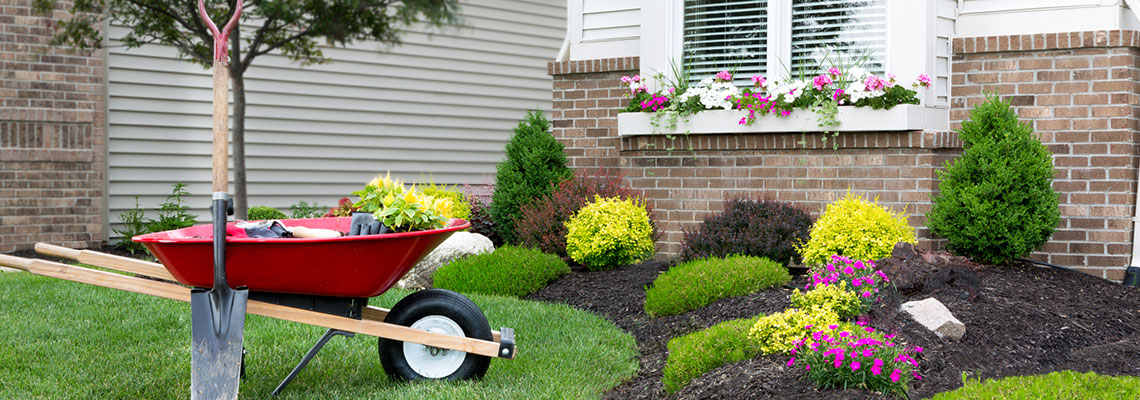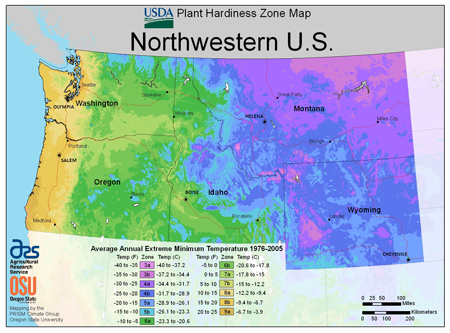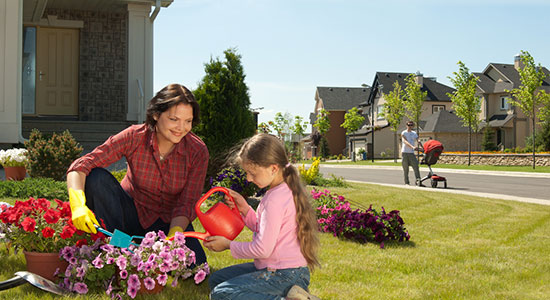
Plus, learn how to choose plants suited to your growing zone
When it comes to landscaping, one of the key factors for transforming an ordinary yard into a vibrant oasis is the strategic use of color. A colorful yard not only enhances the aesthetics of your outdoor space, but it also creates a welcoming atmosphere for you and your guests as well as bees, birds and other pollinators. Achieving year-round color in your landscaping requires careful planning, as choosing the wrong plants for your Washington state climate zone is a waste of time and money. In this article, we will explore the importance of understanding hardiness zones and provide practical tips to create a visually captivating space that thrives throughout the year.
Understanding your region's hardiness zone

Before embarking on any landscaping project, it is crucial to familiarize yourself with the concept of hardiness zones. Also known as growing zones or climate zones, plant hardiness zones categorize geographical regions based on their average annual minimum temperatures. This classification system helps gardeners and landscapers select plants that are most likely to survive and thrive in a particular area.
The United States Department of Agriculture (USDA) assigns growing zone numbers to different regions, ranging from 1 (coldest) to 13 (hottest). For example, much of western Washington is located in climate zone 8, while large swaths of central and eastern Washington are in hardiness zones 6 and 7. Use the USDA's interactive map to find the Washington growing zone for your area.
Image source: USDA.gov
The importance of climate zone in plant selection
Choosing plants suited to your specific hardiness zone, whether in Washington state or elsewhere, is critical to achieving year-round color in your yard. Plants that are well-adapted to your climate have a higher chance of surviving extreme temperatures, frosts and other environmental challenges. By considering your Washington state (or other) growing zone, you can identify the best plants that will not only survive but also flourish, providing you with consistent, attractive color throughout the year.
Strategies for year-round color
- Plan for different seasons: To maintain a vibrant yard all year, incorporate plants that bloom during different seasons. Select early spring bloomers such as daffodils, tulips or cherry blossoms to add splashes of color as winter fades. For summer, choose plants like roses, hydrangeas or sunflowers. Fall can be celebrated with asters, mums and ornamental grasses, while winter landscapes can be enhanced with evergreen shrubs and trees.
- Make use of perennials: Perennial plants, which come back year after year, are excellent choices for sustained color. Consider planting perennials like coneflowers, daylilies or lavender, which offer a variety of colors and can tolerate different climates. Additionally, perennials can be combined with annuals for a dynamic display.
- Add foliage variety: While flowers are often the go-to for adding color, don't underestimate the power of foliage. Different plants exhibit a range of foliage colors, including vibrant greens, purples, reds and variegated patterns. Incorporating shrubs like barberry, Japanese maple or smoke bush can bring year-round interest and hues to your landscape.
- Incorporate evergreens: Evergreen trees and shrubs provide much-needed structure and color during the winter months. Look for varieties that offer unique foliage colors such as blue spruce, golden false cypress or variegated holly. These plants serve as the backbone of your yard's color palette, even when other plants may be dormant.
- Utilize hardscape elements: In addition to plants, hardscape elements like rocks, mulch, pavers and decorative structures can contribute to the overall color scheme. Choose materials that complement your chosen plant palette to provide an appealing blend of colors throughout the year.
Creating year-round color in your yard requires thoughtful consideration of your growing zone and strategic selection of plant varieties well-suited to your climate. By understanding your Washington hardiness zone and incorporating a mix of early spring bloomers, perennials, foliage-focused plants, evergreens and hardscape elements, you can transform your outdoor space into a vibrant and visually attractive oasis. So, roll up your sleeves, plan wisely and let your landscape become a tapestry of color that brings joy and beauty to your yard, no matter the season.
Looking to explore beyond your yard? Embark on incredible journeys with the help of an RV loan from Solarity. Roam freely through national parks, unwind by picturesque beaches and uncover hidden gems across the Pacific Northwest. Our RV loans offer competitive rates and flexible terms, ensuring an affordable adventure awaits. Applying is a breeze – seize the wheel of your RV and set the course for everlasting memories.
What's your Solarity story?
We're on a mission to tell the stories of our members and how they are living their best lives. Do you have a Solarity story to share?



